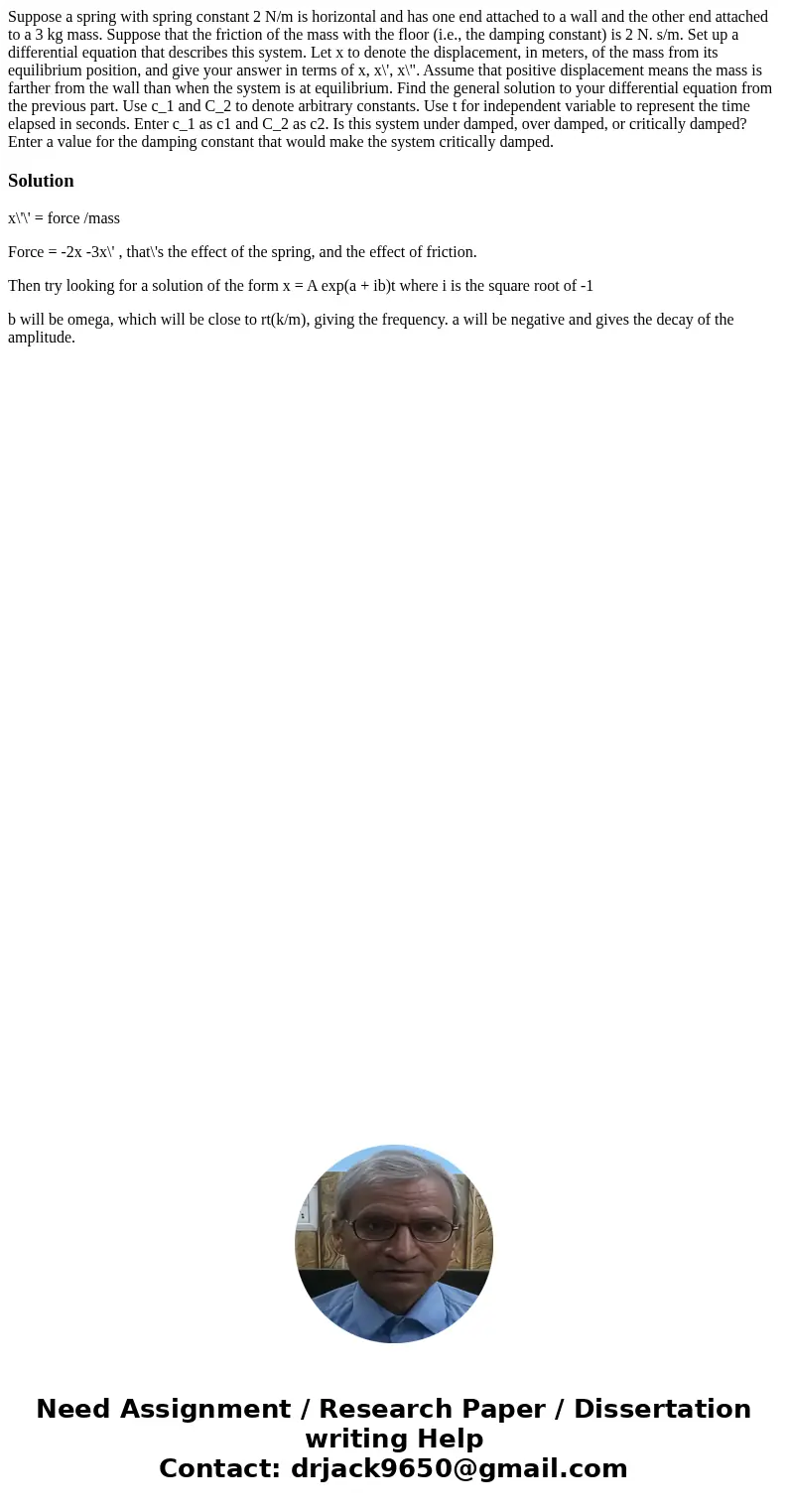Suppose a spring with spring constant 2 Nm is horizontal and
Suppose a spring with spring constant 2 N/m is horizontal and has one end attached to a wall and the other end attached to a 3 kg mass. Suppose that the friction of the mass with the floor (i.e., the damping constant) is 2 N. s/m. Set up a differential equation that describes this system. Let x to denote the displacement, in meters, of the mass from its equilibrium position, and give your answer in terms of x, x\', x\". Assume that positive displacement means the mass is farther from the wall than when the system is at equilibrium. Find the general solution to your differential equation from the previous part. Use c_1 and C_2 to denote arbitrary constants. Use t for independent variable to represent the time elapsed in seconds. Enter c_1 as c1 and C_2 as c2. Is this system under damped, over damped, or critically damped? Enter a value for the damping constant that would make the system critically damped.
Solution
x\'\' = force /mass
Force = -2x -3x\' , that\'s the effect of the spring, and the effect of friction.
Then try looking for a solution of the form x = A exp(a + ib)t where i is the square root of -1
b will be omega, which will be close to rt(k/m), giving the frequency. a will be negative and gives the decay of the amplitude.

 Homework Sourse
Homework Sourse